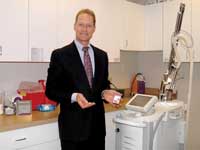Prescription Medicines: Handle with Care
Prescription medicines are great aids in health care. They allow us to manage conditions like asthma, high cholesterol, diabetes, and depression. In some cases, we can even cure or prevent illnesses.
The Centers for Disease Control and Prevention estimates that almost half of all Americans — some 47{06cf2b9696b159f874511d23dbc893eb1ac83014175ed30550cfff22781411e5} — take at least one prescription medication, and that 20{06cf2b9696b159f874511d23dbc893eb1ac83014175ed30550cfff22781411e5} have three or more drugs prescribed. The numbers get bigger with age: 60{06cf2b9696b159f874511d23dbc893eb1ac83014175ed30550cfff22781411e5} of those 65 and older have three or more drugs prescribed.
Given the extraordinarily wide use of these drugs, we should remember that prescription medicines are powerful therapies that must be used and guarded with care. Three areas deserve consistent attention.
Medication Errors. According to the Institute of Medicine, medication errors injure 1.5 million people annually in the U.S. and cost $3.5 billion to treat in hospital costs alone. Several factors cause these mistakes: confusion among drug names; miscommunication among doctor, patient, or pharmacist about dosage or frequency; pharmacy error in filling prescriptions; or incomplete patient information leading to interactions with other drugs.
The critical issue is that the institute considers these preventable errors. Physicians can play a key role here, by adopting electronic-prescribing programs, which can avoid many errors and catch potential drug interactions. Patients and pharmacists also play critical roles in medication safety, and all parties should work together to prevent errors. Here’s a basic checklist to use for every prescription:
- Tell or remind the prescriber and pharmacist about other medications you’re taking.
- Ask about potential side effects.
- Ensure that the prescription the pharmacy fills is what the physician prescribed.
- Understand clearly the dosages and frequency for the drug, and unless otherwise instructed, take all of the medication prescribed.
- See that elderly patients, whose eyesight, memory, or attention to detail may be failing, get assistance.
The Mass. Coalition for the Prevention of Medical Errors offers an excellent consumer guide to medication safety, in English and Spanish, with specifics on what to do at the doctor’s office, hospital, pharmacy, and at home. Visit www.macoalition.org to download a free copy.
Medication Disposal. An investigation in March by the Associated Press found that millions of pounds of unused pharmaceuticals are flushed down the drains of America each year, mostly by health care facilities. Concern is rising because this practice is contaminating water supplies, though no evidence yet exists that these trace elements are causing harm. Many of the facilities are now re-examining their practices and instituting new and safer methods of disposal.
What should individuals do to dispose of prescription drugs safely? Here’s what the the U.S. Food and Drug Administration recommends:
- Follow the disposal instructions on the label. Do not flush down the toilet unless it specifically says it’s OK to do that.
- If no instructions exist, take the medication out of the original container, and mix with an undesirable substance like coffee grounds or kitty litter.
- Put the medication in a sealed container to prevent leaking or getting loose and put into household trash.
- Check for ‘takeback’ programs in your community.
- Do not give medications to anyone else.
- Remove all identifying information from containers to protect your identity and prevent theft of medical or personal information.
Follow these steps for over-the-counter medications as well. For more information, visit www.fda.gov/consumer and search for the document “How to dispose of unused medicines.”
Medication Abuse. The abuse of prescription medications by teens and young adults has become a serious problem. They have easy access to them at home and think they’re a safe way to get high because the drugs have a legitimate use and are prescribed by a health care provider. This kind of thinking leads to nothing more than a self-inflicted health hazard.
The Partnership for a Drug-Free America estimates that 2,500 teenagers, every day, use a prescription drug to get high for the first time; some are as young as 12. Pain relievers, stimulants, sedatives, and tranquilizers are the most commonly abused items. Parents and guardians must be especially alert if prescription drugs are in the home.
The Partnership offers a wealth of information at www.drugfree.org/notinmyhouse on how to combat this problem, including video presentations by physicians and addiction specialists.
Mario E. Motta, M.D., a cardiologist with North Shore Cardiovascular Associates in Salem, is president of the Mass. Medical Society.


Comments are closed.